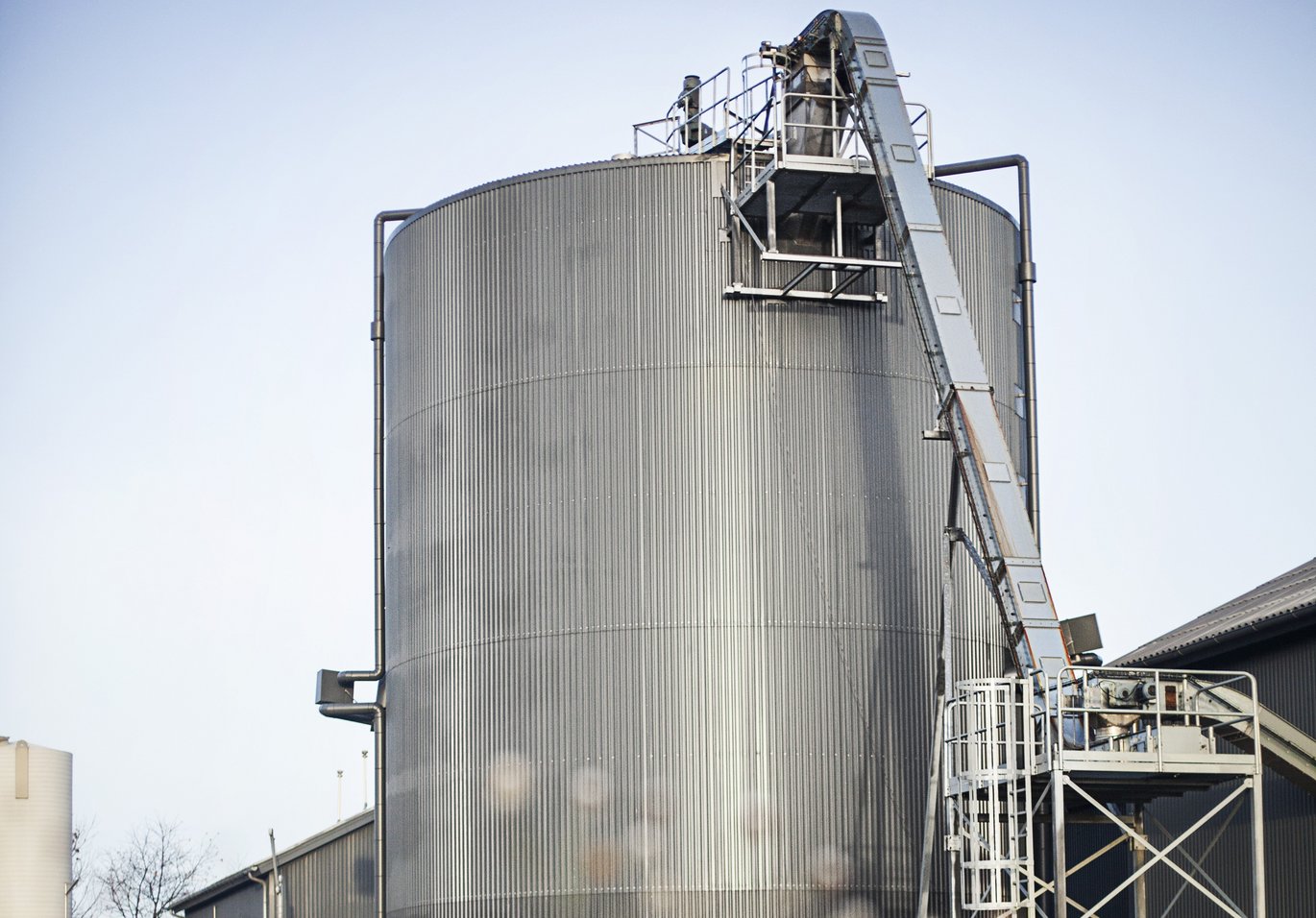New analysis of climate and environmental effects of biogas production
Researchers from the Department of Agroecology and the Department of Engineering at Aarhus University have studied the climate and environmental effects of five different forms of biogas production. The results are published in a new DCA report.

What should future biogas production look like in order to be as sustainable as possible?
Researchers from the Department of Agroecology and the Department of Engineering have investigated this at the request of the Danish Energy Agency. Five model plants with five different forms of biogas production were studied, the results are presented in a new DCA report.
Professor Jørgen E. Olesen, Head of Department at the Department of Agroecology and one of the researchers behind the study, says:
- The quantification of the greenhouse gas and environmental impacts of biogas production constitutes an important basis for designing and targeting future biogas funding in order to optimize the climate and environmental benefits of the production. Our report presents an analysis of the effects of biogas production based on livestock manure and various types of waste biomass, agricultural residues and energy crops. The report sheds light on how different types of biomass affect the sustainability of biogas.
The DCA report, entitled "Sustainable biogas - climate and environmental effects of biogas production", describes and quantifies impacts of relevant effects of biogas, including energy production, greenhouse gas emissions, nitrate leaching, ammonia volatilization, nutrient use, and odour from field application of the digested slurry.
Present and future biomass put to the test
The five different compositions of the biomass substrates, which have been put to the test, appear from the table below. These scenarios and associated assumptions represent the best-applied technologies in the Danish biogas sector as well as expected development pathways.
| Model biogas plant | GHG per ton biomass kg CO2-eq. ton-1 biomass | GHG per unit of gross gas energy produced kg CO2-eq. GJ-1 gross energy |
|---|---|---|
| M1a. Slurry + deep litter | 66.8 | 77.5 |
| M1b. Slurry + straw | 105.5 | 52.9 |
| M2. Slurry + deep litter + energy crop | 67.7 | 68.4 |
| M3. Slurry + deep litter + organic waste | 65.3 | 52.7 |
| M4. Grass-clover + slurry + deep litter + biowaste | 99.5 | 54.7 |
Energy production counts the most
- Our results show a total climate effect of 65-106 kg CO2-eq per tonne of biomass input in the baseline scenarios for model biogas plants having a retention time of 45 days. Most of the effect can be ascribed to the substitution of fossil energy in energy production and the reduction of methane emissions during storage of slurry, deep litter, and slaughterhouse waste. By far the largest part of the effect is due to the former, i.e. that biogas can replace fossil energy, Jørgen E. Olesen emphasizes.
The differences in the gas production at the model plants can mainly be ascribed to variations in the amounts of dry matter per tonne of biomass supplied. The differences between model plants are smaller when considering the climate effect per produced energy unit; here, the effects vary between 53 and 77 kg CO2-eq per GJ gross energy.
- The model biogas plant with the greatest effect per ton biomass is M1b. However, this is also the model plant with the lowest greenhouse gas effect per unit produced energy. The biomass in M1b contains 20% straw, although with current biogas technology this option is not found to be technically feasible. This plant should, therefore, primarily be considered to represent a future scenario, says Jørgen E. Olesen.
The M4 model biogas plant has, apart from M1b, the best climate effect, the majority of which comes from a high gas yield due to a large amount of grass, deep litter and biowaste.
Retention time is crucial
The retention time in the biogas plant also affects the total greenhouse gas impact of biogas production. A longer retention time will increase the production of gas and reduce the amount of degradable dry matter during the subsequent storage, thus reducing methane emissions from the digestate and benefiting the climate.
- The effect of longer retention time depends on the degradability of organic matter in the biomass used. The greatest positive effect will be achieved for slowly degradable biomasses, such as livestock manure and straw, whereas only a limited effect is seen for highly degradable biomass such as crops and waste. A positive effect of extending retention time from 45 to 60 days is seen for all model biogas plants. Jørgen E. Olesen concludes.
Additional information | |
|---|---|
| Requester | The report has been ordered by the Danish Ministry of Climate, Energy and Utilities, the Danish Energy Agency. |
| Funding | The report is funded by a contract with the Danish Ministry of Climate, Energy and Utilities, the Danish Energy Agency. |
| Authors | Jørgen E. Olesen, Henrik B. Møller, Søren O. Petersen, Peter Sørensen, Tavs Nyord and Sven G. Sommer. All from Aarhus University. |
| Further information | Head of Department Jørgen Eivind Olesen, Department of Agroecology. E-mail: jeo@agro.au.dk - Mobile: +45 40821659 Read more about the new engineering departments at Aarhus University in this article: "Four new engineering departments for Denmark" |
